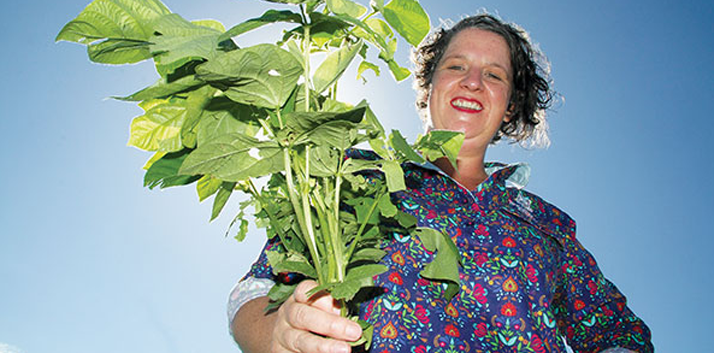A new GRDC research investment, the ‘Optimising Mungbean Yields’ project, is set to better predict what determines mungbean yield in Australia.
Dr Marisa Collins from the University of Queensland will lead the research which aims to benchmark yield and potential drivers of mungbean yield in double-cropping and in fallows.
Mungbeans are the largest summer pulse crop in Australia, but there are still some unknowns about what determines their yield.
Dr Collins will focus the research on factors including soil nutrition and starting water, nematode pressure, rainfall and temperature, and flower-to-pod radio.
Even with good conditions, Mungbeans can return poor yields. Collins explains that understanding what drives yield is an issue she hopes to achieve.
The project will include agronomists, researchers and leading growers of mungbeans.
The initial stages of the project are being trialled on 12 private farms in Queensland, 18 on Darling Downs, and 12 in northern NSW.
Dr Collins said:
“We want to learn from growers, as well as get some hard data around observations, to provide some metrics around what yields can be expected.”
The initial trials have also included the Australian Mungbean Association (AMA) who are helping to manage and monitor the crops.
Mungbeans generally fix their own nitrogen
Growers are wanting to know if they should be fertilising mungbeans as they would any other summer crop.
There is still confusion about the impact on yield if mungbeans are planted in paddocks that were prepared for cotton or sorghum with nitrogen applied in September.
The project helps to provide better answers to growers who want to know what would happen to their crops if they were to double-crop them or plant them into fallow.
‘Optimising Mungbean Yield’ plans to raise the average national yield to two tonnes per hectare from 0.9t/ha – news which has been welcomed by AMA.
AMA president, Mark Schmid, hopes that the data collected will help farmers grow the best crop they possibly can.
“It’s the best summer legume we’ve got… We’re trying to make sure people making decisions about crops are trained correctly…The data our industry will get from ‘Optimising Mungbean Yields’ project will help us to achieve that.”
Image courtesy of Farm Weekly.


One Comment
Comments are closed.